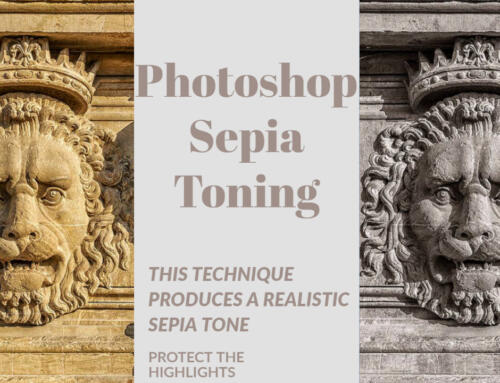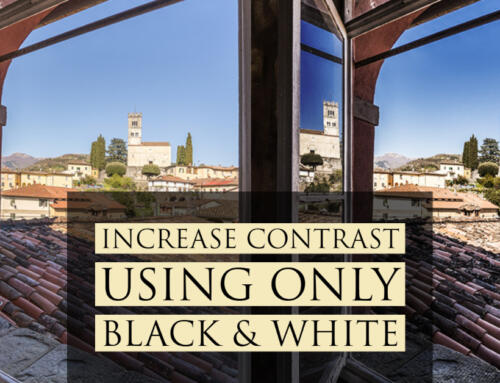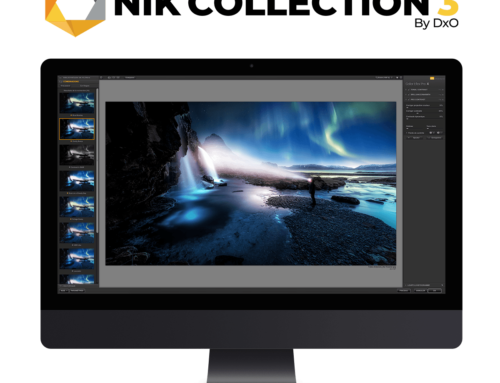Creating HDR images in Lightroom Classic
Let’s look at the workflow for creating HDR images in Lightroom Classic. I will first describe the process for capturing the set of images that will later be blended into one HDR image. Then I will explain how to use Lightroom Classic to combine those images.
Capturing the images for HDR merging
There are two different ways of capturing the multiple exposures for creating HDR photos; manual and automatic. I will mention the process for both the manual and the automatic method for capturing the multiple exposures, but I won’t describe how to work your camera. Each camera works slightly different, so I am going to assume you have enough knowledge of your camera to capture the multiple exposures. If you don’t know how to do this with your camera, you can refer to the manual or Google it.
I am going to describe how to take a set of three and a set of five bracketed exposures. If you feel the need to take seven, or more bracketed exposures, you need only extrapolate the procedure. However, I doubt you’ll need more than five, and I often find that three exposures are enough with the sensors in modern cameras.
Manually capturing multiple exposures
To manually capture a set of three bracketed exposures:
- Set your camera on a tripod or other stable platform;
- Select Manual mode on your camera;
- Adjust the aperture and shutter speed as you would for a single balanced image. This balanced image will be your base exposure;
- Take the balanced photograph;
- Now adjust the shutter speed to be 2 stops below the base exposure, and take the picture;
- Next, adjust the shutter speed to be 2 stops over the base exposure, and take the picture;
- You have now captured a set of three bracketed exposures (-2, 0, +2 stops).
To capture a set of five bracketed shots:
- Follow steps 1 – 4 above;
- Adjust your shutter speed to be 1 stop below the base exposure, and take the image;
- Adjust your shutter speed to be 2 stops below the base exposure, and take the image;
- Now, adjust your shutter speed to be 1 stop above the base exposure, and take the image;
- Finally, adjust your shutter speed to be 2 stops above the base exposure, and take the image;
- You have now captured a set of five bracketed exposures (-2, -1, 0, +1, +2 stops).
You should only ever adjust the shutter speed when creating a set of exposure bracketed images. Also, it makes no difference what order you create the bracketed images.
Automatically capturing multiple exposures
When automatically capturing a set of bracketed exposures, you have the choice of using a tripod or handholding the camera. The camera is going to take the sequence of bracketed images in quick succession without any additional input from you. Therefore, once you have dialled in the number of shots and the bracket between each shot, you need only hold the shutter button while the camera fires off the sequence of bracketed shots. If you anticipate the slowest of these exposures will still be fast enough to handhold the camera, then go for it. Lightroom will remove the slight movement between the shots. If the slowest of the exposures will to be too long to handhold the camera, you should mount the camera on a tripod or other stable platform.
All good cameras will have an option for automatically capturing a set of bracketed exposures. There will either be a button on the camera body (the button usually market with BKT), or you will need to scroll through the menu screens to access the bracketing options. You may need to consult the manual for your camera.
To automatically capture a set of bracketed exposures:
- Decide if the slowest exposure will allow you to handhold the camera or not. If in doubt, try it handheld first;
- Using the camera’s bracketing menu, dial in the number of shots and the exposure stops between each of the shots;
- Frame the image and press the shutter release. Wait until you hear that all of the photos have been captured, remembering that the slowest of the exposures may take several seconds to complete;
- You have now automatically captured a set of bracketed exposures.
If your camera has this ability to capture a series of bracketed images automatically, I recommend this as the preferred option.









Leave A Comment